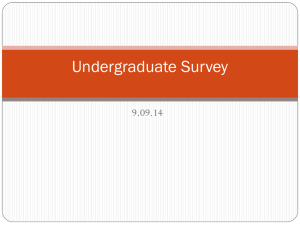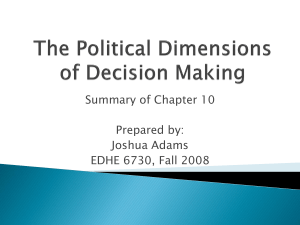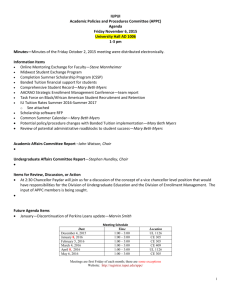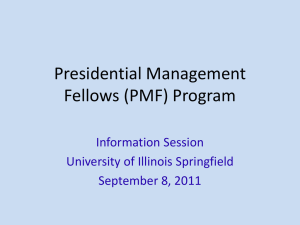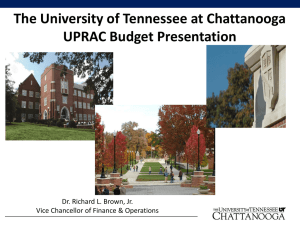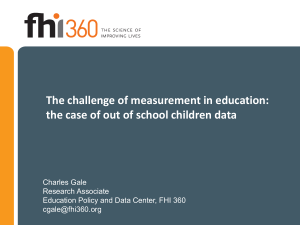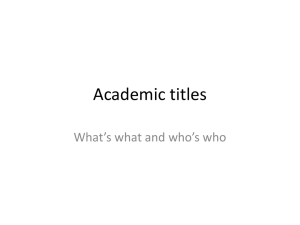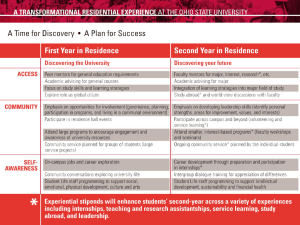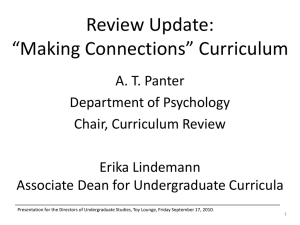NAPTF Campus Forum presentation 2013
advertisement
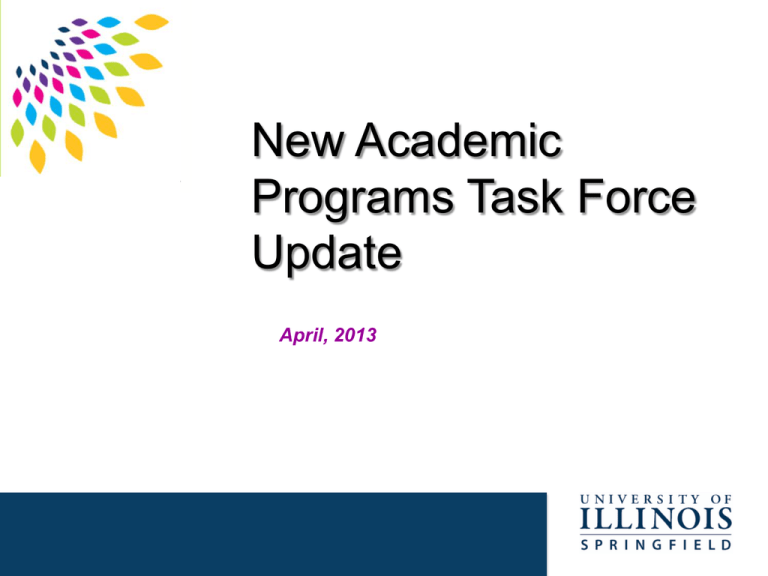
New Academic Programs Task Force Update April, 2013 Why was the New Academic Programs Task Force formed? State funding continues to decline Enrollment growth essential UIS is at a competitive disadvantage in recruitment because it has so few undergraduate programs Task Force formed to make informed collaborative recommendations for new program priorities Task Force Structure voting members and non-voting support staff voting • • • • • 4 faculty 3 deans 1 student affairs administrator 1 staff member 1 student college representation governance committee linkages Members Tim Barnett • Vice Chancellor for Student Affairs Beverly Bunch • • Professor of Public Administration, College of Public Affairs & Administration Chair of the Campus Planning & Budgeting Committee Patty Byrnes • • Associate Professor of Economics, College of Business & Management Chair of the Committee on the Assessment of Student Learning Jim Ermatinger • Dean of the College of Liberal Arts & Sciences Rebekah Grosboll • • Online Coordinator Undergraduate General Education Advisor for the College of Public Affairs & Administration Brian Kahn • • Assistant Professor of Teacher Education, College of Education & Human Services Member of Undergraduate Council Linda McCown • • Associate Professor of Clinical Laboratory Science, College of Liberal Arts & Sciences Member, Committee on Admissions, Recruitment, & Retention Ron McNeil • Dean of the College of Business & Management Will Miller • Interim Dean of the College of Public Affairs & Administration Jinger Sanders • UIS Student Support Staff Cecilia Cornell • Tammy Craig • Associate Vice Chancellor for Undergraduate Education Ray Schroeder • • Clinical Assistant Professor, Brookens Library Director of Collections & Scholarly Communications for the Library Karen Moranski • Administrative Assistant to the Provost Stephen McMinn • • Interim Director of Admissions Monica Kroft • Director of Career Services Lori Giordano • Faculty Associate, Provost’s Office Associate Vice Chancellor for Online Learning Director of the Center for Online Learning, Research, & Service Aaron Shures • Associate Provost and Director of Budget & Financial Analysis Background Call to faculty and academic professionals for ideas Focus on prioritizing new programs that require new resources Does not replace governance process for curriculum approval Task Force members encouraged to be innovative and open to new ideas Process both creative and data-driven Programs Considered Close to 80 initial submissions Additional suggestions received Not all were academic majors Some already under development Some didn’t require new resources for start-up Task Force members could add to list Task Force Charge Develop a prioritized list of viable new academic programs, at the undergraduate level, that will contribute to enrollment growth and academic excellence at the University of Illinois at Springfield Ideal academic programs will: – provide preparation for occupations in demand at local, regional, and/or national levels for the foreseeable future – meet high demand from prospective undergraduate students – fit well with the UIS mission, vision, and location – contribute to UIS’ reputation as a premier regional university – generate enrollment growth Task Force Process Identified relevant factors & data needed Organized suggested program list Separated out program proposals not needing new resources Reviewed relevant data Considered program possibilities Ranking of programs No program ideas discarded Ratings, Ratings, & More Ratings Close to 80 suggestions were received from faculty, academic professionals, and others – not all suggestions were clear majors or degree programs Task Force started with basic rating template – tool for assessing collective view – Evolved through five phases based on Task Force discussions and suggestions Meetings involved review of aggregate ratings, data, discussion No ideas discarded Data Considered Admissions data on majors requested (student demand) State documents on higher education Reports from Springfield Chamber of Commerce on economic development strategies Chicago plan for economic growth & jobs Linkages between majors and occupations Occupational outlook at state and national levels Salaries (by major, by entry-level positions) Regional competitors Preliminary cost/revenue considerations Relation to existing academic departments/majors Short List: Tier 1 Digital/New/Interactive Mass Media Finance: BBA Concentration Exercise Science/Athletic Training B.S. Health Services Administration Short List: Tier 2 Actuarial Science Ag Business: BBA Concentration Environmental Public Health Nursing R.N.; R.N. to B.S.N. Some Unanticipated Convergence February 2011 Enrollment Expansion Retreat Suggestions* – – – – – – – – – – Finance Marketing Blended MBA Liberal Arts coupled with business curricula Education (elementary ed/early childhood) Media/journalism/digital media Critical analysis (data analytics) Environmental Studies Public Health Public Administration *Suggestions in color were either independently advanced by an academic department or also emerged from NAPTF’s work What’s Next? Continue consideration of programs in top tiers Consider campus community input Formulate recommendations for Year 1 program priorities for implementation Review list, consider possibilities, and formulate recommendations for Year 2 and Year 3 Comments? Share now or Send later to http://go.uis.edu/NAPTFCampusComments Want even more information? Check out the Frequently Asked Questions link on the Academic Affairs webpages at http://www.uis.edu/academicaffairs/plan ning/naptf/
